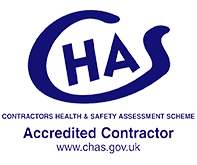10 Damp Proofing Myths Debunked
Dampness, a silent intruder in many homes, can pose significant structural concerns and affect indoor air quality. Understanding the truth about damp-proofing is crucial to safeguard your home from the damaging effects of moisture. It can manifest in various forms, from condensation and rising damp to penetrating damp and groundwater ingress. Each type of dampness poses unique challenges and requires specific solutions.
Ignoring dampness is a costly mistake. Prolonged dampness can lead to serious structural damage, affecting the integrity of walls, floors, and timber. Additionally, dampness can attract pests, such as woodworm and termites, which can further damage the property. Proper damp-proofing measures are essential to eliminate the source of moisture and prevent dampness from recurring. These measures may include installing a damp-proof course, improving ventilation, or addressing condensation issues.
When damp problems arise, seeking professional advice is crucial. Damp-proofing experts can accurately assess the situation, recommend appropriate solutions, and ensure that your home remains dry and healthy. In this post, we debunk some of the most common myths surrounding damp proofing, ensuring that you, as a homeowner or property manager in London and the South East of England, make informed decisions about protecting your property.
Myth 1: Damp Proofing is Only Necessary for Older Homes
While older properties, especially those built before damp proof courses (DPCs) became standard, are more prone to damp issues, new buildings are not immune. Modern construction methods and materials can also be susceptible to damp, especially if there has been a compromise in the building’s moisture barrier systems.
Myth 2: Visible Damp Always Means Rising Damp
Damp in a property can arise from various sources, not just from the ground (rising damp). It could be due to condensation, leaking pipes, or even penetrating damp – where water seeps in from outside due to structural issues like faulty guttering or roof tiles. A thorough investigation by a damp proofing specialist is necessary to diagnose the exact cause and recommend an appropriate treatment.
Myth 3: DIY Damp Proofing is Just as Effective as Professional Services
DIY solutions might seem cost-effective, but they often offer only a temporary fix and can sometimes exacerbate the problem. Professional damp proofing companies provide expert diagnosis and the use of specialised techniques and materials that are not typically available to the DIY enthusiast. Professionals also ensure compliance with relevant building regulations and standards.
Myth 4: Damp Proofing is Excessively Disruptive and Messy
Modern damp proofing techniques have evolved to be less invasive and disruptive. While some level of disruption is inevitable, professional services aim to minimise this as much as possible. In London, where many homeowners balance busy lives, a damp proofing company in Merton can provide you with an efficient solution with minimal hassle.
Myth 5: Once Damp Proofed, a Property is Protected Forever
Although a well-executed damp proof course offers long-term protection, it is not a ‘set and forget’ solution. Regular maintenance, such as checking for plumbing leaks, ensuring good ventilation, and inspecting the exterior for signs of damage, is vital to maintain the effectiveness of the damp proofing.
Myth 6: Damp Proofing is Only About Installing a DPC
While installing or repairing a DPC is a significant part of damp proofing, it’s not the only aspect. Comprehensive damp proofing may also involve treatments like waterproofing basements (tanking), fixing structural issues, improving ventilation, and using damp-resistant materials in areas prone to moisture.
Myth 7: Any Type of Plaster Can Be Used After Damp Proofing
After damp proofing, especially in cases of rising damp, it’s crucial to use a plaster that’s compatible with the DPC and resistant to salt migration. Regular plasters can fail in such conditions, leading to peeling and degradation. Qualified specialists can always advise on the best materials for lasting results.
Myth 8: Damp Proofing Will Solve All Mould Problems
While damp proofing can significantly reduce the risk of mould growth by controlling moisture ingress, it’s not a standalone solution for mould problems. Good ventilation, consistent heating, and humidity control are also critical in preventing mould growth.
Myth 9: Insurance Always Covers Damp Proofing
This depends on the specific terms of your insurance policy. Many standard home insurance policies do not cover damage caused by dampness or the cost of damp proofing treatments. It’s important to check your policy or consult with your insurer.
Myth 10: All Damp is Harmful
While prolonged exposure to damp environments can cause structural damage and health issues, not all damp is immediately harmful. Small, well-managed areas of damp problems, especially in older properties, can sometimes be tolerated as long as they are monitored and do not worsen.
Leading Damp Proofing in Merton
At Kenwood PLC, we offer professional damp proofing services to address rising damp in properties, which can occur due to inadequate damp proofing in earlier construction. Our experts implement an effective damp proofing treatment by removing wall plaster and installing a new damp proof course using Kenwood siliconate injection fluid or Kenwood DPC cream.
This process forms an impervious barrier against moisture. Additionally, our unique Premix Waterproof Rendering System ensures a perfect mix for salt retardant rendering. Services are available for homeowners, property professionals, and can be coordinated with builders during refurbishments. For inquiries, contact us at info@kenwoodplc.co.uk or call 01923 242441.


